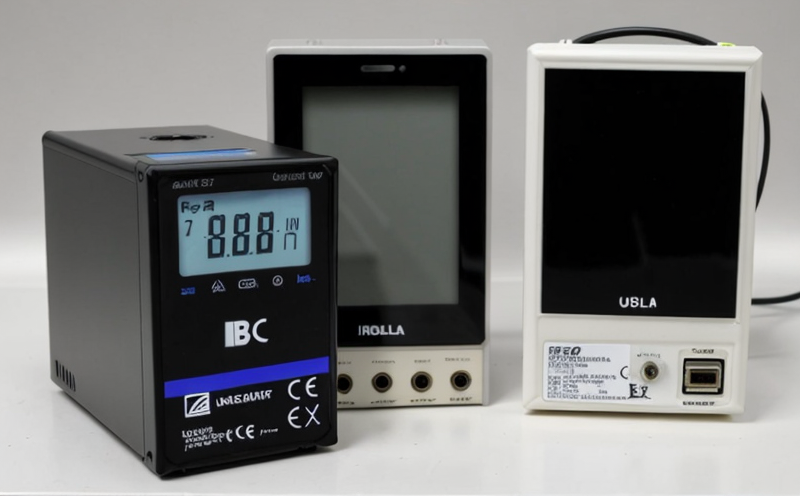ANSI C18.3M Consumer Electronics Button Cell Testing
The ANSI C18.3M standard is a pivotal document in the realm of consumer electronics, specifically addressing button cell batteries used in devices like hearing aids, watches, and toys. This testing service ensures that these small but critical components meet stringent performance and safety criteria. The focus lies on evaluating the electrical characteristics, mechanical integrity, and chemical stability to ensure reliability and compliance with industry standards.
Button cells are highly specialized due to their compact size and specific energy density requirements. Compliance with ANSI C18.3M ensures that these batteries perform consistently across various environmental conditions, making them safe for end-users. The testing process involves a series of rigorous procedures designed to simulate real-world usage scenarios. This includes high-temperature storage tests, charge-discharge cycles, and mechanical stress assessments.
One of the key aspects of ANSI C18.3M is the emphasis on safety. The standard mandates that batteries undergo short-circuit protection testing to prevent potential hazards. Additionally, there are specific guidelines for evaluating the battery’s ability to withstand environmental stresses such as humidity and temperature extremes. This ensures that consumer electronics remain operational in diverse climates.
The testing protocol also includes detailed instructions for preparing specimens. For instance, button cells should be conditioned at room temperature before undergoing any tests to ensure accurate performance metrics. The equipment used for these tests is state-of-the-art, capable of providing precise measurements under controlled conditions. Reporting follows a standardized format that aligns with international standards.
The significance of ANSI C18.3M cannot be overstated in the consumer electronics industry. It plays a crucial role in safeguarding public health and safety by ensuring that button cells meet strict quality benchmarks. Compliance with this standard is essential for manufacturers aiming to enter competitive markets or expand their product lines.
Manufacturers who adhere to ANSI C18.3M can benefit from enhanced brand reputation, increased customer trust, and better market access. The stringent testing protocols also help in identifying potential design flaws early on, allowing companies to address issues before products reach the consumer market.
International Acceptance and Recognition
The ANSI C18.3M standard is widely recognized across numerous countries and regions due to its comprehensive approach to battery testing. Countries like the United States, Canada, Europe, and Japan have adopted this standard as a benchmark for consumer electronics safety and performance. Its global acceptance underscores the importance of adhering to such rigorous standards.
Compliance with ANSI C18.3M is often a prerequisite for export markets, ensuring that products meet local regulatory requirements before being sold internationally. This not only simplifies the certification process but also builds confidence among international buyers regarding product quality and safety.
- United States: The ANSI C18.3M standard is recognized by the Consumer Product Safety Commission (CPSC) for its role in ensuring battery safety.
- European Union: Although not mandatory, compliance with ANSI standards enhances a product's competitiveness within EU markets.
- Asia-Pacific: Countries such as China and South Korea have incorporated ANSI C18.3M into their national standards for consumer electronics.
The widespread adoption of this standard reflects its value in promoting safety, reliability, and performance across various industries. It serves as a critical tool for manufacturers aiming to meet global market demands while ensuring product quality meets the highest international standards.
Environmental and Sustainability Contributions
The testing of consumer electronics button cells under ANSI C18.3M also contributes significantly to environmental sustainability efforts. By ensuring that batteries perform efficiently and safely, manufacturers can reduce waste associated with failed products and enhance the overall lifecycle of electronic devices.
- Reduced Waste: Reliable performance minimizes the need for frequent replacements, thereby reducing e-waste generation.
- Energy Efficiency: Testing ensures that batteries operate at optimal levels, which can lead to more energy-efficient consumer electronics.
- Material Optimization: Compliance with ANSI C18.3M helps in selecting appropriate materials for battery construction, promoting recycling and responsible resource management.
The use of this standard also supports the development of greener technologies by encouraging innovation in sustainable energy storage solutions. By adhering to these stringent testing protocols, manufacturers can contribute positively to environmental conservation efforts.
| Environmental Benefits | Implementation |
|---|---|
| Reduction of Hazardous Waste | Ensuring safe disposal and recycling practices for failed batteries. |
| Enhanced Resource Efficiency | Optimizing battery design to maximize performance with minimal resource use. |
| Increased Consumer Confidence | Maintaining high product standards that reduce the need for frequent replacements. |
The ANSI C18.3M standard is a cornerstone in fostering sustainable practices within the consumer electronics industry, aligning with broader global goals to minimize environmental impact and promote responsible consumption.
Use Cases and Application Examples
- Hearing Aids: Ensuring consistent power supply for hearing aids is crucial for maintaining their effectiveness. ANSI C18.3M testing ensures that batteries meet the necessary performance requirements.
- Watches: The small form factor of button cells in watches necessitates rigorous testing to ensure longevity and reliability.
- Toys: Toys often incorporate button cells for lighting or sound effects, making ANSI C18.3M compliance essential for ensuring they function safely and effectively.
The following table provides a detailed look at various use cases and application examples where ANSI C18.3M testing plays a critical role:
| Product Type | Description |
|---|---|
| Hearing Aids | Safeguards against battery failure, ensuring consistent power supply. |
| Watches | Ensures reliable performance and longevity of small batteries in compact devices. |
| Toys | Maintains safety and functionality for components that are often exposed to children. |
The ANSI C18.3M standard is indispensable in these sectors, providing a robust framework for ensuring product reliability and safety. By adhering to this standard, manufacturers can enhance the overall performance of their products while contributing positively to environmental sustainability.





